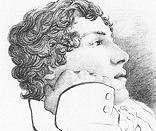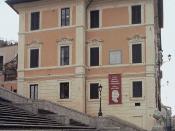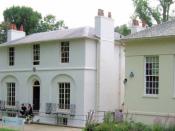John Keats's "Ode to a Nightingale" is intricate in detail whilst maintaining its ability to allow many different readings from its readers even whilst its own statements are quite precise. One very common reading of the ode is to see the nightingale as a symbol of poetic inspiration and fulfillment. This is displayed by Keats's descriptions of the nightingale and his use of imagery that links closely with that of inspiration. Thus, the poem is interpreted to be Keats's quest to find inspiration and go beyond human boundaries. Another reading of the same poem, which suppresses the symbolic role of the nightingale and focuses more on the strong paradoxes evident throughout the poem, is that of Keats's desire to lose himself completely in an experience of happiness by the effort of his imagination, however, this renders reality more painful by contrast and this experience can be only maintained momentarily before reality sets in again
Keats's "Ode to a Nightingale" can fittingly be interpreted as a metaphorical text on the nature of poetic inspiration and the poet's quest to become one with inspiration as historically, birds have always been ideal as symbols of inspiration.
The way Keats describes the nightingale plays a central part to this reading of the poem. In the first stanza, Keats describes the bird as a "light-winged Dryad of the trees" (1.7). It is because of its "light-wings" that the nightingale is able to soar above the earthbound men. It can be construed that inspiration, unlike men, have neither boundaries nor forces holding it back. The images in the first stanza are nearly all of anesthesia and linked to the sorrow of the human condition: "drowsy numbness", "dull opiate", "hemlock" and "Lethe-wards". These sorrowful images are sweetly augmented by such moments in...



Ode to a Nightingale
This essay is an analysis of John Keat's Ode to a Nightingale. Thank you for clearing this poem up for me. I didn't quite understand it in class although it was easy because I didn't like the poem but the essay is good.
1 out of 1 people found this comment useful.